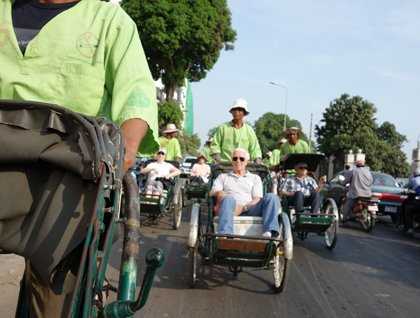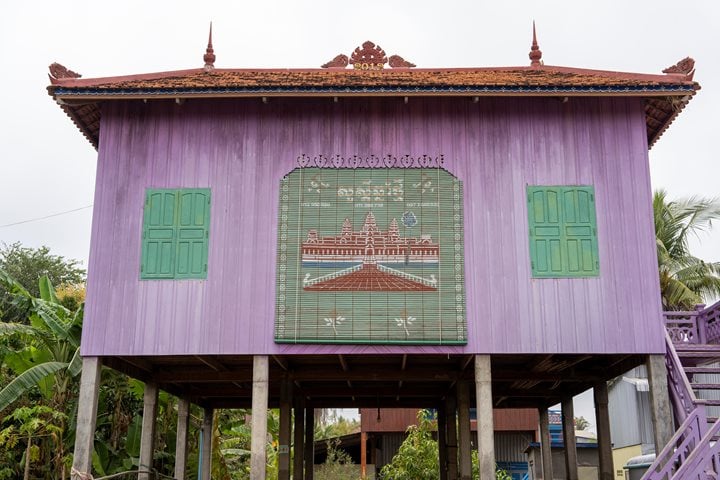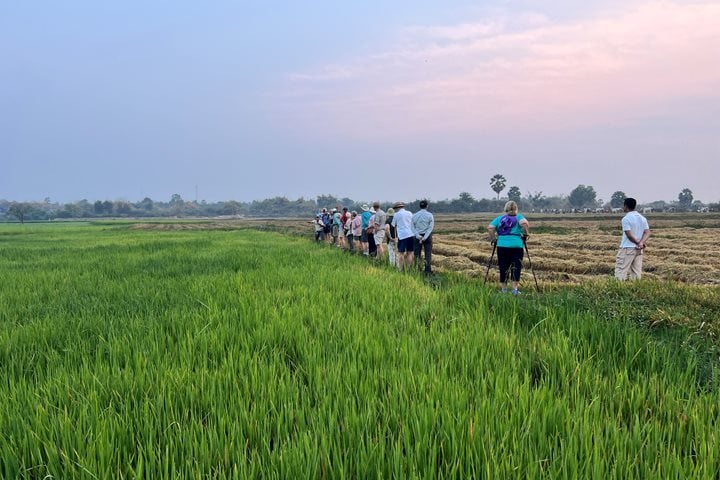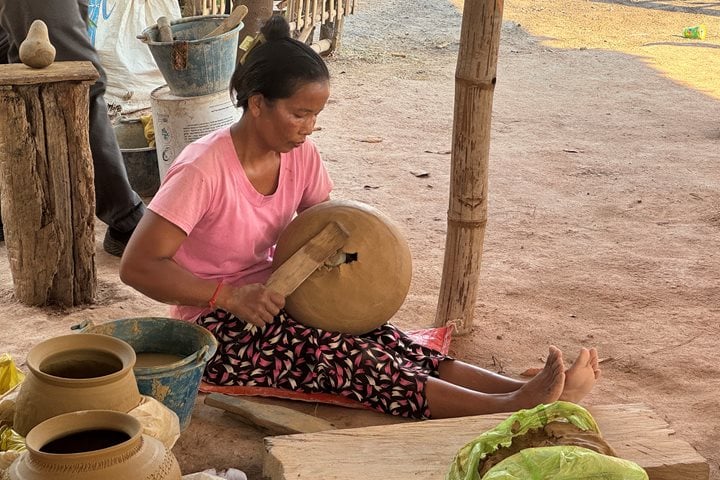We anchor off Phnom Penh, the Cambodian capital, at midnight, and await dawn to bring Jahan alongside at the cruise terminal north of the city centre. Those who arise early are treated to a brief sightseeing cruise along the waterfront where we view the old French town, much of which has remained pretty much as it was when Cambodia was a French protectorate. Here is where the “Chaktomuk” occurs: the confluence of four rivers: the upper and lower Mekong, the Bassac and the Tonle Sap, which is the connection to the great lake to the north.
As the April heat is already building, we board a long line of “cyclopousses,” Khmer-style rickshaws in which one sits in front of the driver. In the morning traffic of Phnom Penh, this can be exciting, as our drivers frequently ignore lanes to make their way through the heavy traffic of Sisowath Quay in the direction of the palace and government buildings to the south.
We stop at the Royal Palace, built by the French in Khmer style at the turn of the 20th century. A blue flag indicates that the king is in residence in his Khemara Palace at the back of the complex. The main attraction is the Silver Pagoda, so named because of its solid silver flooring, now mostly covered by elaborate carpeting. The Pagoda, the term used in English by Cambodians for a Buddhist temple, is filled with treasures donated from all over the country, including hundreds of silver and bronze Bhudda figures. The garden is peaceful and green, with many varieties of plant life, including “bodhi” or “cannonball” trees, sacred to Buddhists.
The superb National Museum is next on our itinerary, completed, again by the colonial rulers in 1920, but thoroughly Khmer in its architecture, and containing major treasures of the Angkor and pre-Angkor periods, as well as some more contemporary items. The museum guides have developed a professional style over the years since Cambodia recovered from its violent recent past and bring the museum pieces alive for their visitors. We can escape the heat briefly in the well-manicured garden with its shady corners.
After lunch at the modern Topaz restaurant, we visit the “S-21” interrogation museum (or “Tuol Sleng Genocide Museum”) where an estimated 17,000 victims of the Khmer Rouge regime were tortured, wrote “confessions” and then were trucked off to the Cheoung Ek killing field to be disposed of.
We split into two groups for visits to Cheoung Ek and to the NGO Tabitha. The latter is an organization founded by a Canadian woman, Janne Ritskes, and is dedicated mainly to rural development. Janne is not here today as she is tied up in meetings to raise funds for a women’s hospital which she hopes will open, with Cambodian government support, in 2016. The headquarters is also a shop where visitors can purchase beautiful and reasonably priced silk products.
In the evening, our excellent chef produces a sumptuous barbeque buffet on the pool deck, and the beautiful and very talented young dancers of Cambodia Living Arts come aboard to perform traditional Khmer dances. A fitting end to a busy day in the nation’s capital.







